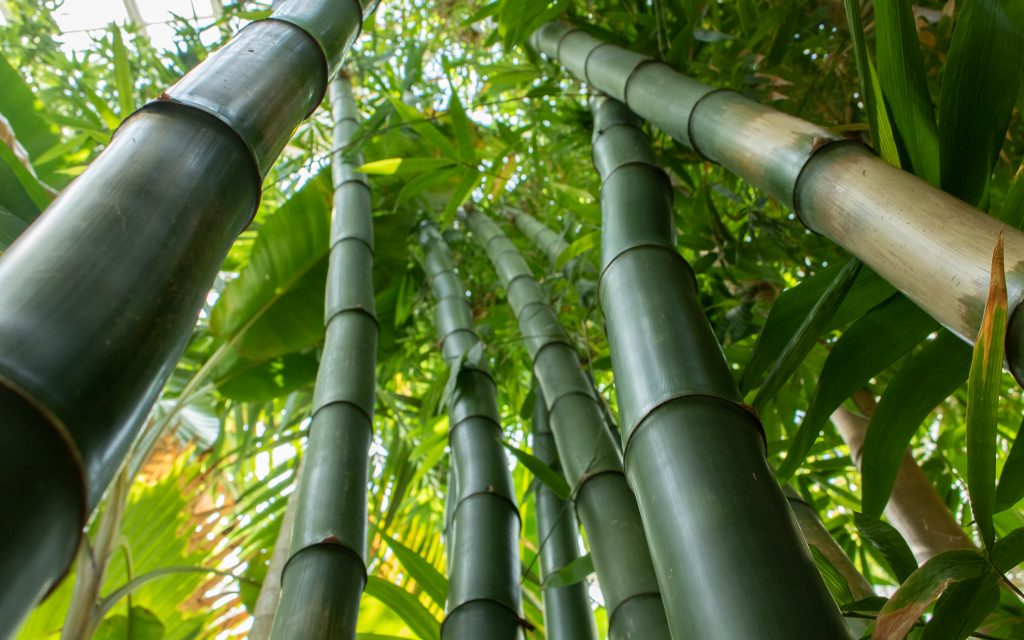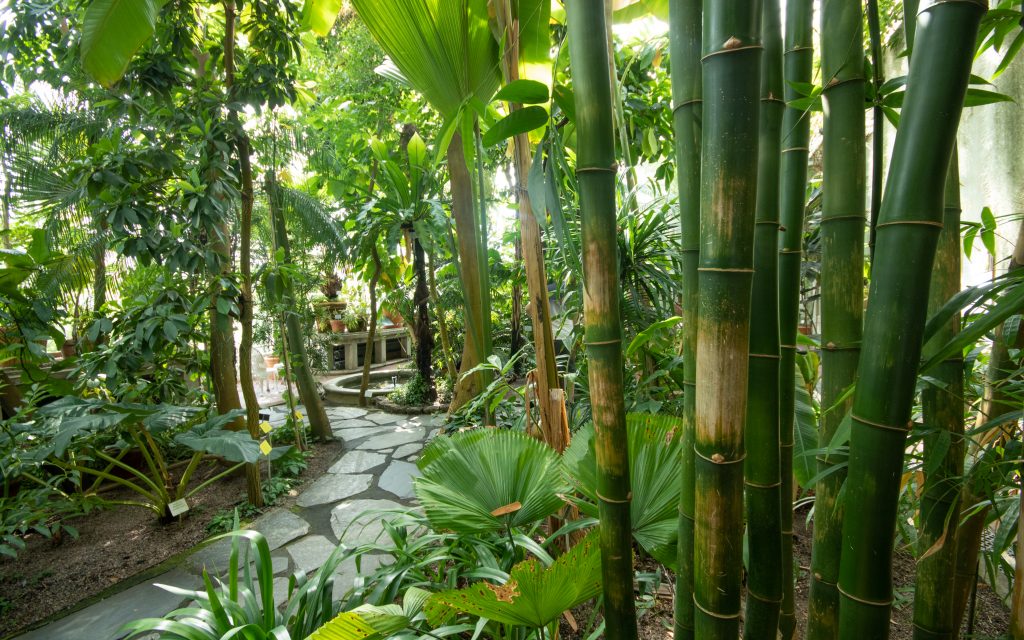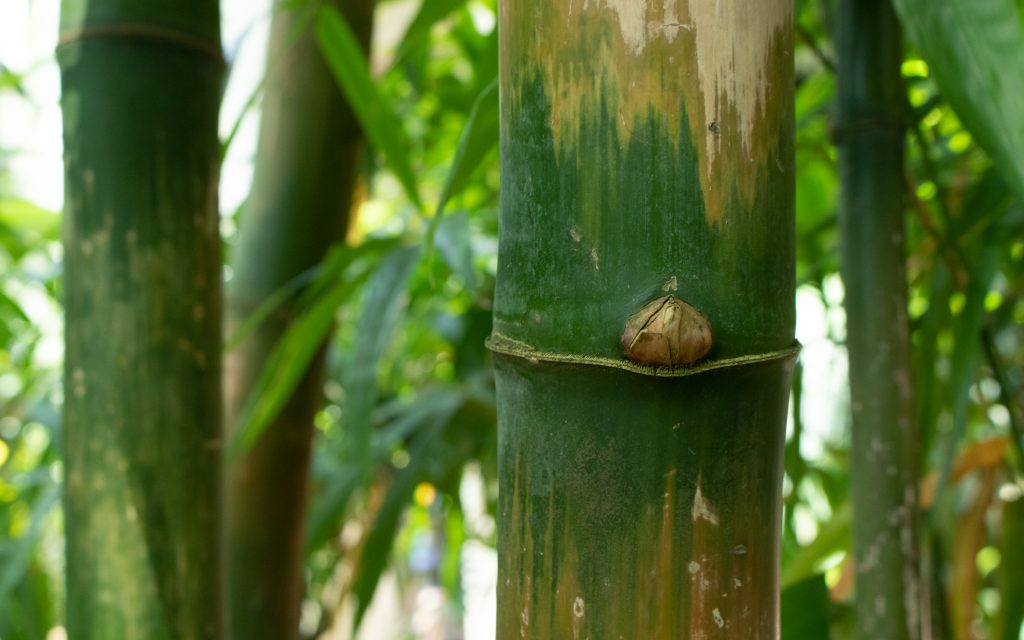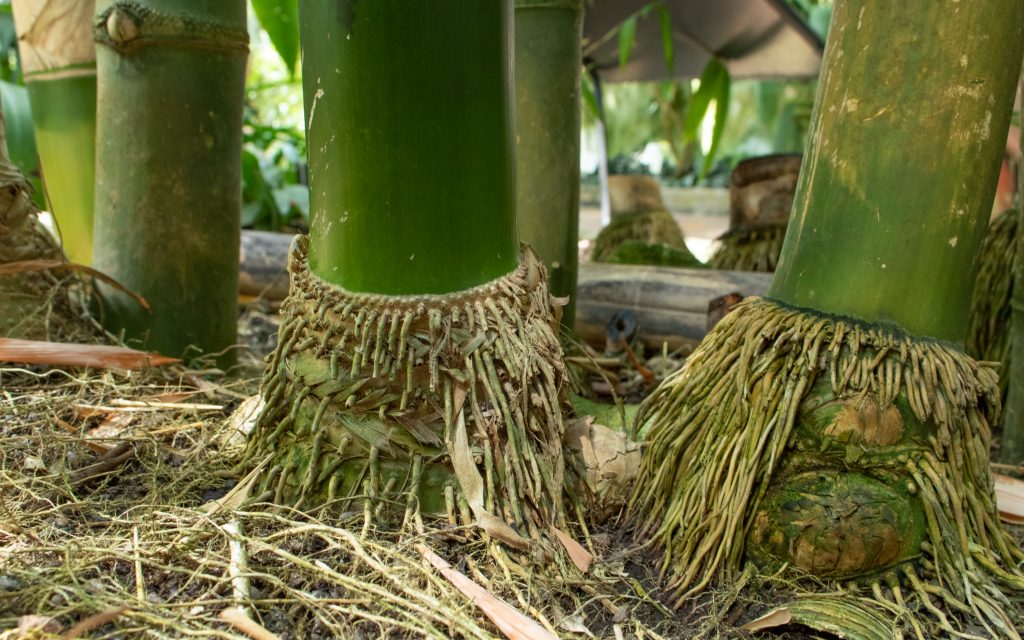The versatile bamboo
Did you know that the bamboo is actually a woody-stemmed grass? Bamboos are known for their rapid growth – this common bamboo can grow up to 50 centimetres per day. Some varieties of giant bamboo can grow up to over a metre per day! Cuttings from the bamboos in the Palm House are occasionally sent to Korkeasaari zoo as snacks for the monkeys and red pandas.
The bamboo is an extremely useful plant. It can be used to make scaffolding, dishes, chopsticks, furniture, water pipes, musical instruments and paper. Bamboo shoots are edible, and bamboo fibre can be used to make textiles.
Bamboo is known as a durable and ecological material. It grows quickly, requires little water, and needs no fertilisers or pesticides. Extensive bamboo plantations, however, are often associated with the destruction of native forests. The manufacturing of bamboo textiles requires large quantities of chemicals which are harmful to both humans and other organisms.
Luckily there are solutions: new technologies have been developed to recycle the chemicals from the bamboo industry. However, further investments are needed to acquire new purifying systems for the factories. We as consumers also have a responsibility to buy goods from producers who operate transparently, comply with employee protections and are committed to recycling chemicals. When cultivated sustainably and responsibly, bamboo is an excellent choice of material.



